
How To Make Raised Beds For Hot Peppers
Building a raised garden bed is a great way to get even more out of growing hot chilli peppers. Just gather a few pieces of equipment and some high-quality soil, and you can set your pepper plants up for great success. Here's how to make your own raised bed at home.
Growing chilli peppers is a very rewarding endeavour. Whether you love extreme heat or just want something fresh and juicy to give extra life to a salad, chillies can be put to a whole spectrum of culinary uses.
Once you’ve identified your chosen chilli varieties, you’ll want to grow the highest-quality fruits possible, and harvest the biggest crops. Building a raised garden bed is a fantastic way to take a little control of your plants' environment, for little extra cost and effort.
In what follows, we'll break down the benefits of growing pepper plants in raised garden beds, before providing instructions on how to make your own.
Should you plant hot peppers in raised garden beds?
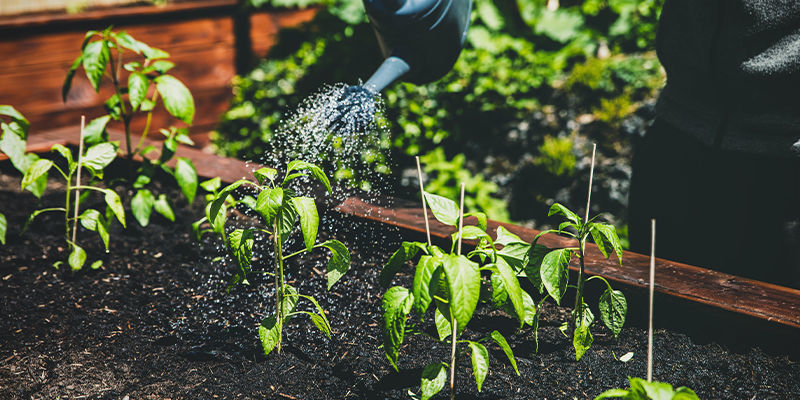
Using raised beds to grow chilli plants offers a range of benefits, which will ultimately result in more and better-quality chilli peppers. By simply raising them off the ground, you gain a significant amount of influence over your plants' growing environment, making cultivation much more of a managed procedure.
Furthermore, creating a raised bed is a very simple process, cheap, and accessible to anyone who has the space for one.
Growshop
Set up your grow the right way. Tents, lights, nutrients, propagation supplies, pots, and many handy accessories.
What are the benefits of raised beds?
The benefits of growing hot peppers in a raised garden bed include:
- Very good drainage; hot peppers don’t like soaked soil
- Mulch or landscaping fabric stops other plants from growing through
- Soil warms up earlier than in the ground, meaning you can plant outside earlier
- Cheap to buy
- Easy to make at home
On top of the aforementioned benefits, there aren’t really any notable drawbacks to growing in a raised garden bed. So long as you have the available space and take your time to make one correctly, there’s little to say against them.
Raised beds vs growing in the ground
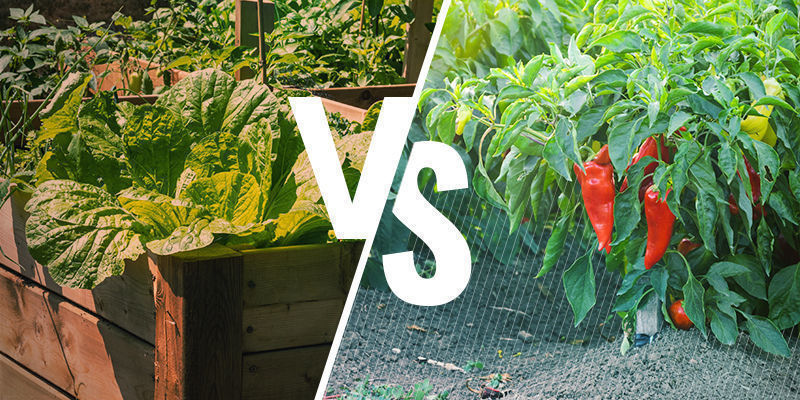
The above benefits are essentially the management of factors we don’t have so much control over when growing pepper plants in the ground; primarily, drainage. If you live somewhere very wet, and you grow peppers straight in the earth, they're likely to get soaked at some point, and there will be little you can do about this. In a raised bed, however, the water simply drains away, and the soil retains a good amount of moisture.
Likewise, raised beds allow you to stop other plants from taking space away from your hot peppers in the first place—though you can of course add companion plants if you wish. But controlling what’s growing in your beds means your pepper plants get all the nutrients and light they need, and you needn’t go around removing weeds all the time.
How to build a raised bed for hot peppers
Building a DIY raised garden bed is pretty easy. In fact, it’s totally adequate to just screw four pieces of timber together, and place this wherever you choose to grow. Below, we’ll review what materials you need and where best to place a raised bed for pepper plants, before providing instructions on the procedure.
Which materials are best for a hot pepper raised garden bed?
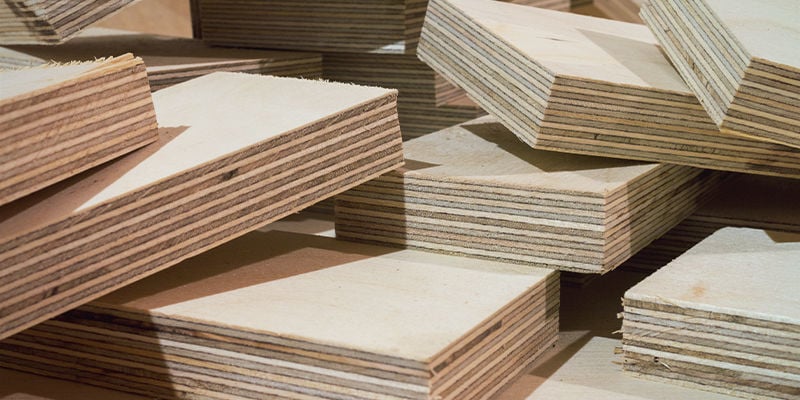
Plywood is perhaps the wood best suited to building a raised bed, as it’s tough and will last a good while, even if it regularly gets wet. You could also use something like oriented strand board (OSB), but it’s likely to rot fairly quickly and would need to be replaced.
Treating your wood with some waterproof sealant will increase the lifespan of your bed significantly. Paint designed for sheds or garden fences should work well, but anything that seals wood is likely to suffice. When buying scumble or paint, make sure to choose harmless products, because after all, you want to grow edible fruits in your raised bed.
Once you’ve made your bed, you’ll want to fill it with soil. If you’re confident the soil in your garden is top-notch, then you could just dig a hole and use the existing earth. But in all likelihood, high-quality organic potting soil is more suited to achieving high-quality fruits.
Beyond wood and soil, there are very few things you need. A full list of equipment will be given below.
What is the best location for a hot pepper bed?
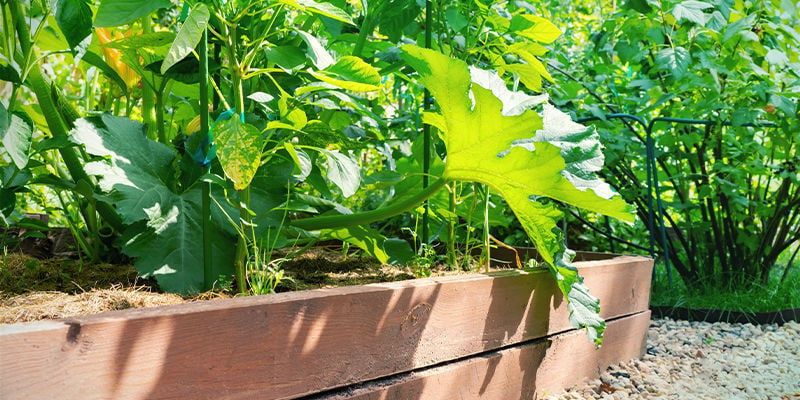
Depending on your setup, you might not have the luxury to be picky about where you place your raised garden beds. If, however, you are lucky enough to have the choice, here are some factors to consider when choosing a location:
- Sunlight
- Drainage
- Wind exposure
- Moisture availability
- Previous pest issues
Pepper plants like a fair amount of light, so having them hidden away in some north-facing side of the garden isn’t the most ideal. Generally, warm, sunny spots are great for growing peppers.
Although raised beds improve drainage massively, it’s still helpful to have good drainage beneath them if possible. This can be carried out using mulch or gravel. Just know that water will run out the bottom fairly quickly and could pool if the drainage is very poor beneath.
Otherwise, just pick the most hospitable spot that you can find for them!
Equipment
- Plywood (how much will depend on the size of your bed, but one or two sheets should be enough)
- Scumble/Paint
- Drill
- Screws
- Saw
- Landscaping fabric or mulch
- Soil
Instructions
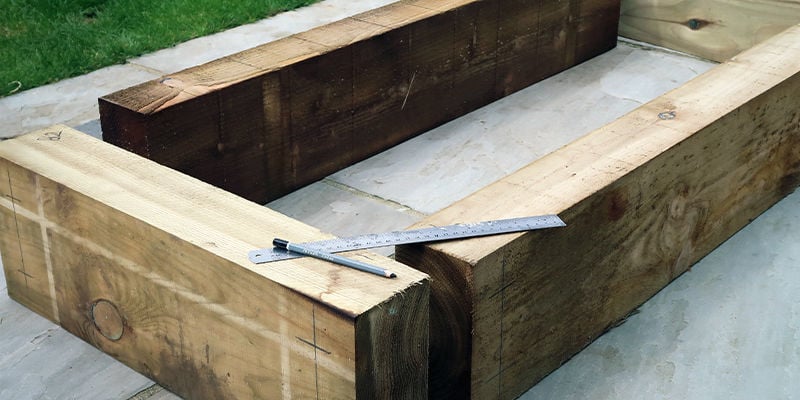
Given how few pieces of equipment you need, you won’t be surprised to discover that making a raised garden bed is an easy process!
-
Identify the size of your bed, and cut the plywood accordingly. Peppers like at least 30cm of soil to develop their root system. So cut strips of ply that are at least 30cm wide (keep in mind you will be adding some mulch to your raised bed). Then, cut the sides and ends to length.
-
Drill pilot holes into the plywood where the screws will go.
-
Screw the ends to the long sides to create a box shape.
-
Level out the location where the raised bed will be, and place your wooden box on it.
-
Line your raised bed with a layer of cardboard as mulch, then fill with soil.
-
Now, when the time is right, you’ll be ready to transplant your pepper seedlings into their very own raised bed.
-
(Optional) After planting your seedlings, cover the soil with bark mulch or wood chips.
Alternative methods for creating raised garden beds
Raised beds are pretty rudimentary things, and pretty much anything that raises soil off the ground can function as a bed. Here are some other methods:
- Simply heap soil on the ground (though this isn’t the most effective)
- Use bricks to create the walls, and fill with soil
- Use an old tire
- Use a large bucket (but drill holes in the bottom for drainage!)
Raised beds and hot peppers: FAQ
- 🌱 Can you germinate seeds in raised beds?
- While it's possible, a warmer environment with more moisture would be better. Germinate in seedling trays, then transplant the seedlings into the raised bed.
- 🌶️ How many hot peppers can you plant in a raised garden bed?
- This is entirely dependent on the size of your bed. Though if you think of a medium-sized container that you’d grow pepper plants in, each plant wants around this much space to itself.
- 🛖 Do you need to trellis with a raised bed?
- No, you shouldn’t need to trellis pepper plants grown in raised beds. Climbing plants like tomatoes, however, may require this.
- 🧑🌾 What soil should you use in a raised bed?
- Good-quality organic soil is a perfect choice for raised beds.
- ⏲️ When should you plant hot peppers in a raised bed?
- Spring. As the soil in raised beds warms up a little faster than in the ground, you can transplant peppers slightly earlier in the year—but be aware that they hate frost.
- 🪴 Can raised beds be used on concrete?
- Yes, but drainage beneath will be poor. While this won’t be a huge issue for the bed itself, it could permanently stain the concrete beneath.
Choose your favourite hot peppers and get growing
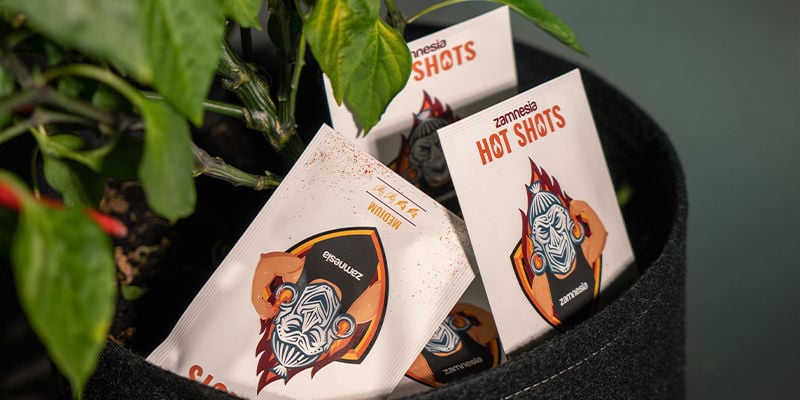
So, if you want to grow chilli peppers outdoors, why not make a raised bed to get the most from the process?
Most varieties of chillies grow well in raised beds. For the world’s hottest chillies, try growing Carolina Reaper or Ghost Pepper seeds; for something a little more tasty and fresh, try Biquinho; or for an absolute classic, maybe just try growing Jalapeños. Take a look through our Peppershop to see just how many varieties of chillies are available.
-
 5 min
12 July 2022
What Are The Benefits Of Hot Peppers?
Chilli peppers are a wonderful addition to many meals. But it gets even better. Capsaicin—the component of hot peppers responsible for their much-loved heat—is also great for our health.
5 min
12 July 2022
What Are The Benefits Of Hot Peppers?
Chilli peppers are a wonderful addition to many meals. But it gets even better. Capsaicin—the component of hot peppers responsible for their much-loved heat—is also great for our health.
-
 8 min
18 March 2022
How To Grow Hot Peppers Outdoors
There's nothing quite like having your own supply of spicy hot peppers. And while it may seem a daunting task to grow them outdoors, we're here to show that it's really not! All you need to do is...
8 min
18 March 2022
How To Grow Hot Peppers Outdoors
There's nothing quite like having your own supply of spicy hot peppers. And while it may seem a daunting task to grow them outdoors, we're here to show that it's really not! All you need to do is...
-
 7 min
4 March 2022
How To Grow Hot Peppers Indoors
Growing chillies might seem like a complicated task, but we're here to tell you that it really needn't be. Even if you don't have an adequate space outside to grow them, you can produce some...
7 min
4 March 2022
How To Grow Hot Peppers Indoors
Growing chillies might seem like a complicated task, but we're here to tell you that it really needn't be. Even if you don't have an adequate space outside to grow them, you can produce some...
-
 5 min
24 January 2022
When And How To Harvest Hot Peppers
You've taken the time to cultivate hot peppers, giving them everything they need to flourish throughout their growing cycle. Yet, arguably the most critical moment is fast approaching; when and how...
5 min
24 January 2022
When And How To Harvest Hot Peppers
You've taken the time to cultivate hot peppers, giving them everything they need to flourish throughout their growing cycle. Yet, arguably the most critical moment is fast approaching; when and how...





 United States
United States












